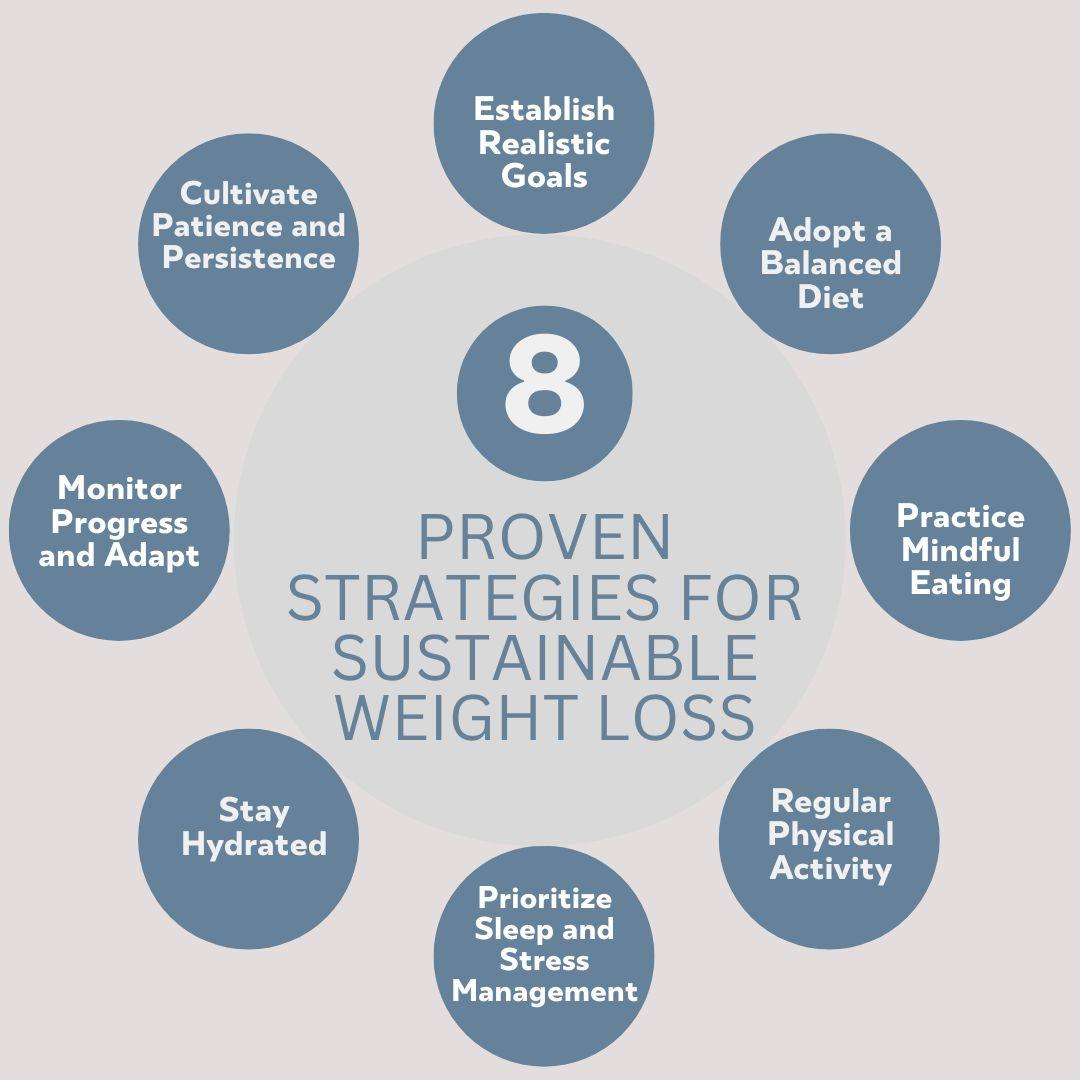In the ever-evolving landscape of health and wellness, achieving and maintaining weight loss remains a formidable challenge for many. While the allure of quick fixes and fad diets often captures public attention, these solutions frequently lead to temporary results and subsequent frustration. To break the cycle of yo-yo dieting and fleeting success, it is crucial to explore strategies that promote sustainable weight loss. This article delves into the analytical underpinnings of long-term weight management, examining the interplay of psychological, physiological, and behavioral factors. By understanding the science behind nutrition/the-best-low-carb-foods-to-include-in-your-weight-loss-diet/” title=”The Best Low Carb Foods to Include in Your Weight Loss Diet”>sustainable weight loss and embracing evidence-based practices, individuals can cultivate lasting changes that transcend mere numbers on a scale, fostering a holistic transformation in health and lifestyle.
Understanding the Science of Sustainable Weight Loss
Achieving sustainable weight loss is rooted in understanding the intricate relationship between metabolism, nutrition, and physical activity. Metabolism, the body’s energy conversion process, plays a pivotal role. To support a healthy metabolism, it’s essential to focus on balanced eating habits that include all major food groups in appropriate portions. Nutrition should be a mix of macronutrients like carbohydrates, proteins, and fats, as well as micronutrients such as vitamins and minerals. It’s crucial to avoid extreme dieting as it can disrupt metabolic balance and lead to weight cycling.
Incorporating regular physical activity is another cornerstone of sustainable weight loss. Exercise not only burns calories but also boosts metabolism and supports muscle retention. It’s important to find activities that are enjoyable and can be maintained long-term. Consider the following strategies for a balanced approach:
- Focus on strength training to build muscle, which can increase metabolic rate.
- Engage in cardiovascular exercises like walking, cycling, or swimming to improve heart health and burn calories.
- Incorporate flexibility and balance exercises such as yoga or Pilates to enhance overall physical fitness.
Crafting a Balanced and Personalized Nutrition Plan
Developing a nutrition plan that is both balanced and personalized is pivotal for sustainable weight loss. This involves understanding your body’s unique needs and preferences. Start by assessing your current dietary habits and identifying areas for improvement. Consider the macronutrient composition—proteins, carbohydrates, and fats—ensuring they are in harmony with your energy expenditure and lifestyle. Incorporate a variety of foods to meet micronutrient requirements, emphasizing whole grains, lean proteins, fruits, and vegetables.
- Listen to your body: Recognize hunger cues and avoid restrictive eating.
- Set realistic goals: Tailor your plan to align with your personal objectives and daily routine.
- Incorporate flexibility: Allow room for occasional indulgences to prevent feelings of deprivation.
- Track progress: Use apps or journals to monitor your food intake and adjust as needed.
By customizing your nutrition plan, you create a sustainable pathway to weight loss that supports your health and well-being in the long term.

Incorporating Consistent and Enjoyable Physical Activity
To ensure your weight loss journey is not just a fleeting endeavor but a sustainable lifestyle change, it’s crucial to integrate physical activity that is both consistent and enjoyable. Identify activities that you genuinely look forward to—whether it’s dancing, hiking, cycling, or swimming. By engaging in exercises that you find fun, you’ll naturally be more motivated to stick with them over time. The key is to shift the perception of exercise from a chore to a pleasurable part of your day.
- Variety is your ally: Mix different types of exercises to keep things fresh and prevent monotony.
- Set realistic goals: Start with achievable targets and gradually increase the intensity as your fitness improves.
- Track your progress: Use apps or journals to monitor your improvements, which can provide a sense of accomplishment and encourage persistence.
- Incorporate social elements: Join group classes or find a workout buddy to add a social dimension to your routine, making it more enjoyable and less isolating.
Remember, the ultimate aim is to create a balance where exercise feels less like an obligation and more like a natural, rewarding part of your life. By doing so, you’ll be more likely to maintain your routine and enjoy the myriad benefits of an active lifestyle.

Building a Supportive Environment for Long-term Success
Creating a space that encourages healthy habits is fundamental to achieving and maintaining weight loss over the long term. This involves both the physical and social environments. Start by organizing your kitchen to promote better choices: keep fresh fruits and vegetables visible and easily accessible, store unhealthy snacks out of sight, and ensure your pantry is stocked with whole grains and lean proteins. Additionally, consider the influence of your social circle. Surround yourself with individuals who support your goals, whether by joining a fitness class or participating in community health initiatives.
Developing a positive mindset is equally important. Celebrate small victories to maintain motivation and prevent burnout. This can be as simple as acknowledging when you choose a healthy meal over a quick fix or when you complete a workout session. It’s crucial to set realistic goals and understand that setbacks are part of the journey. Incorporate regular check-ins with yourself to assess your progress and adjust your strategies as needed. Remember, sustainability is about making gradual, manageable changes that fit seamlessly into your lifestyle, ensuring that healthy choices become second nature rather than a chore.
